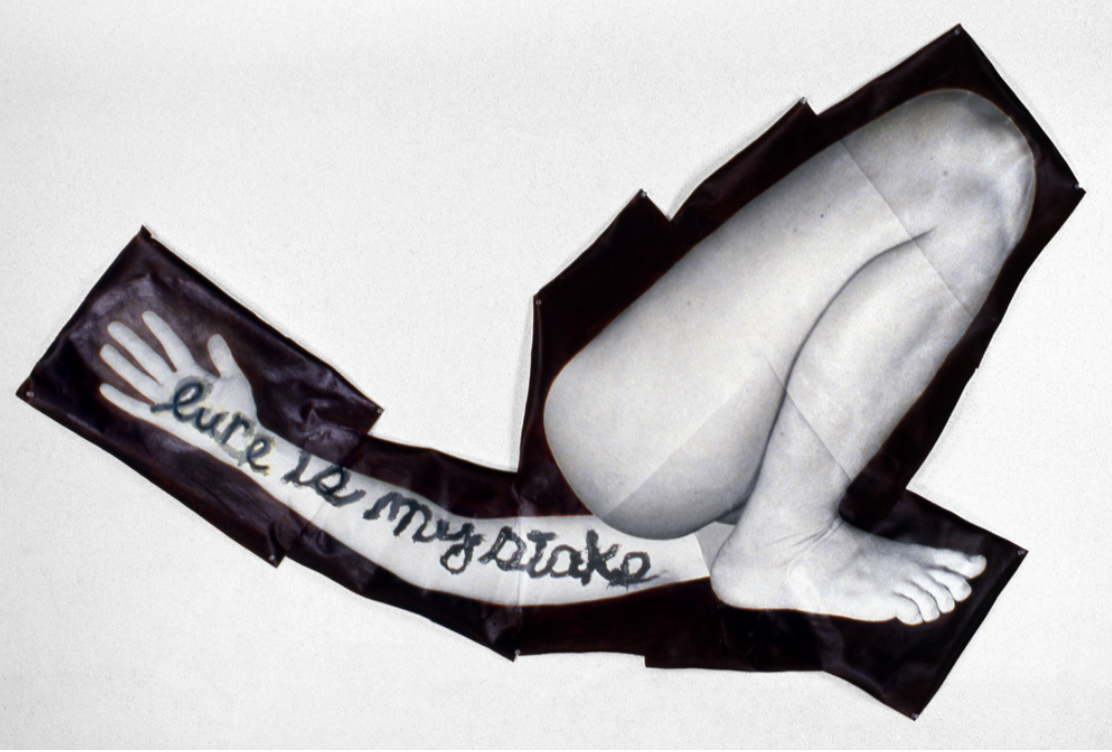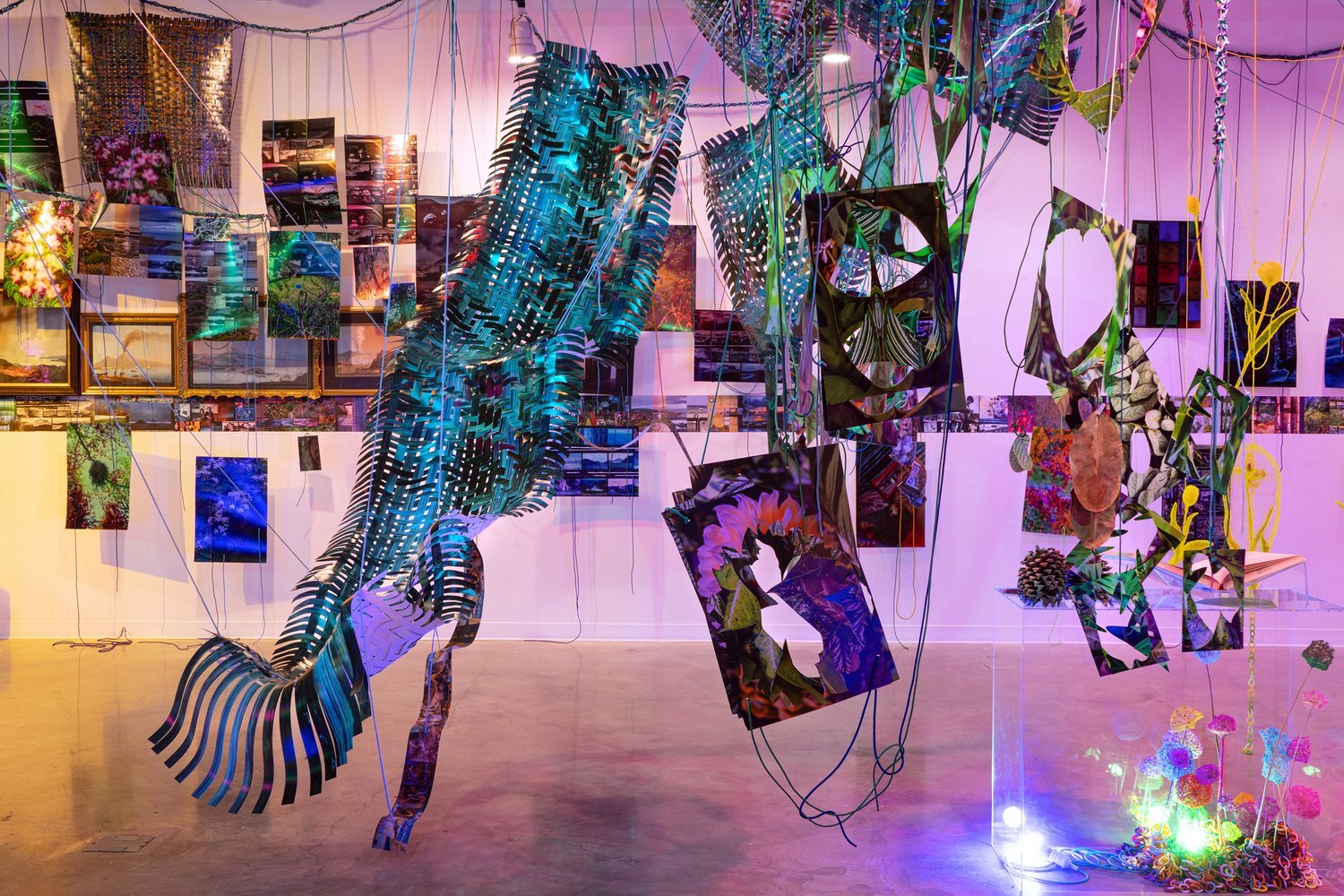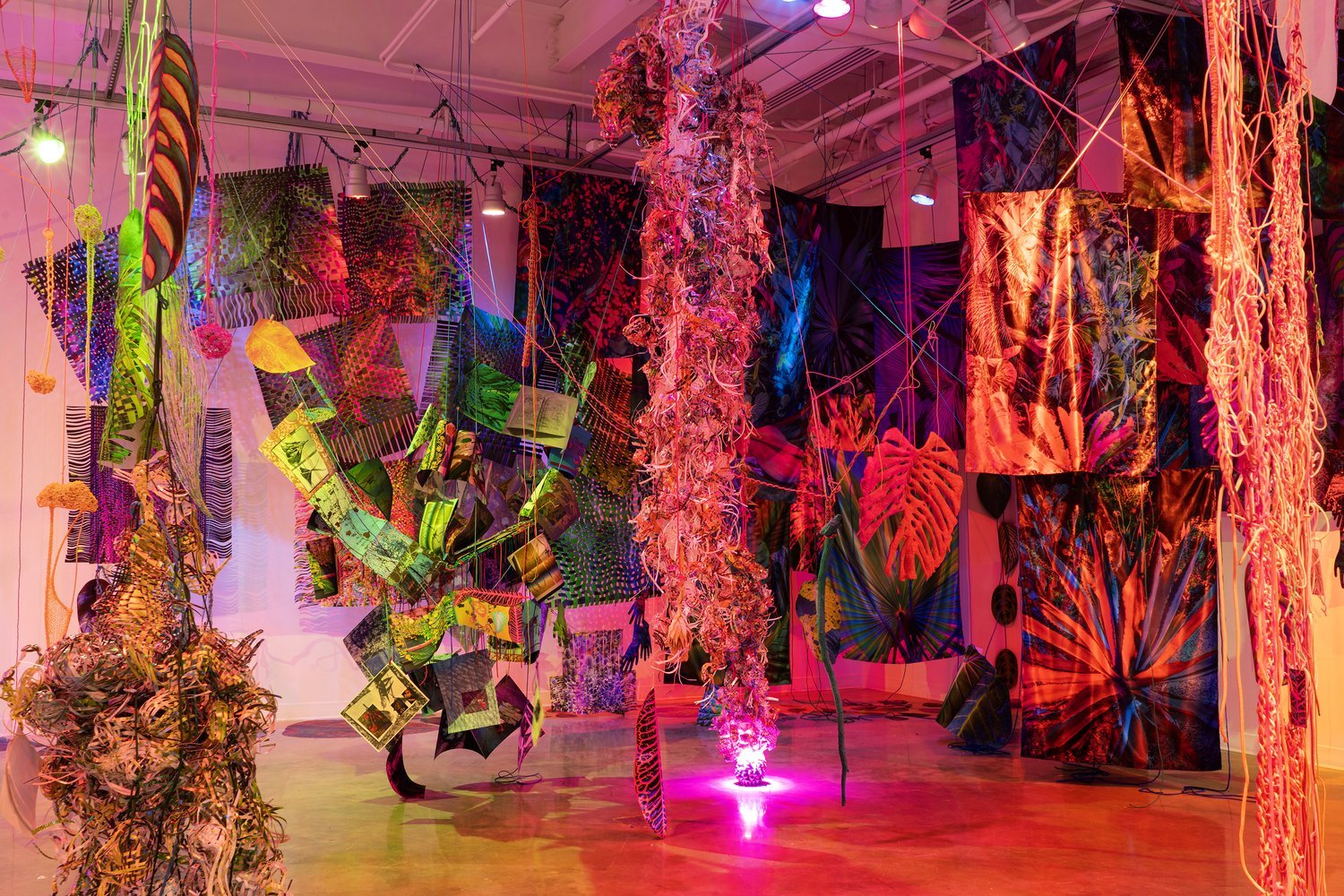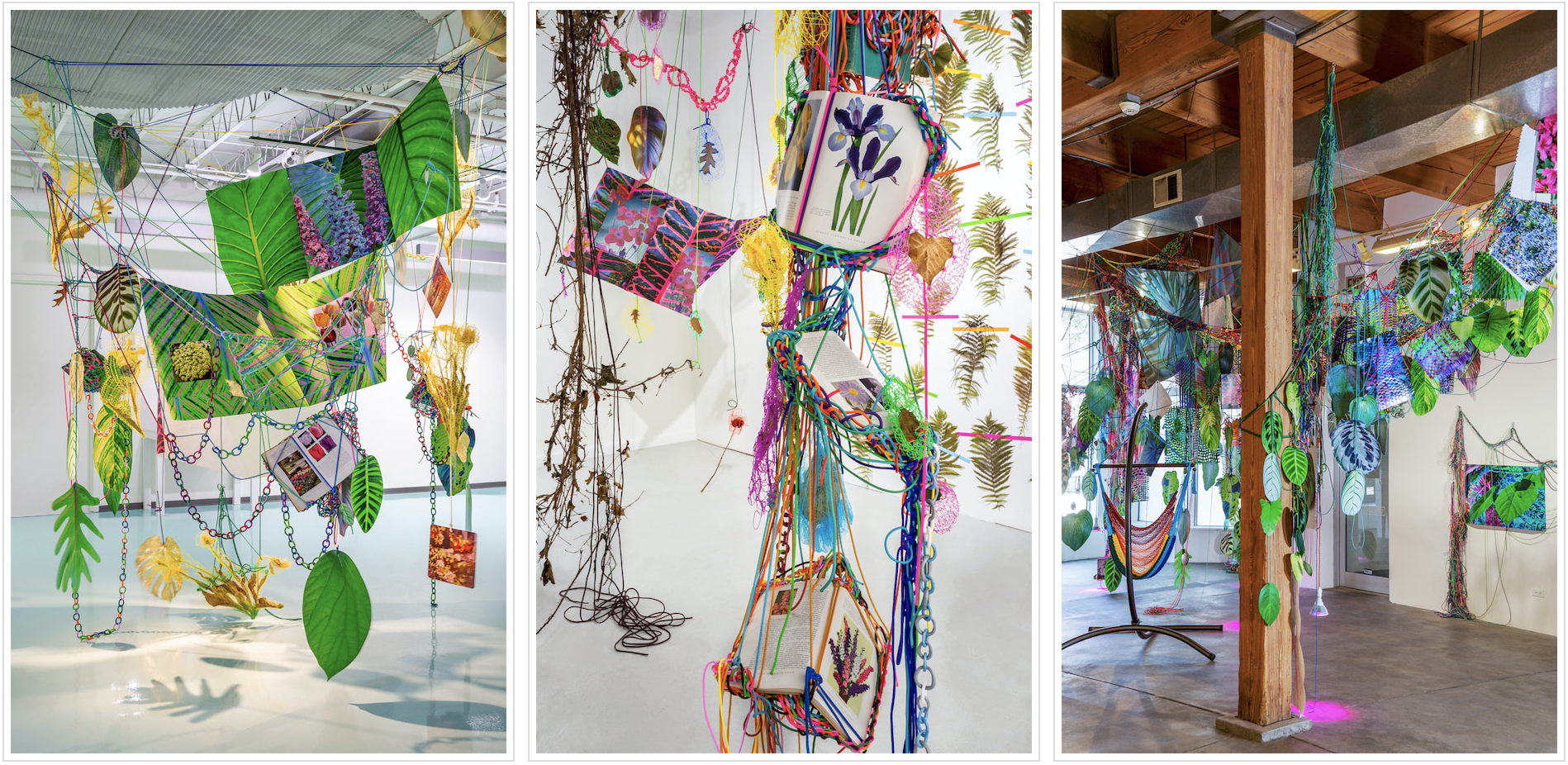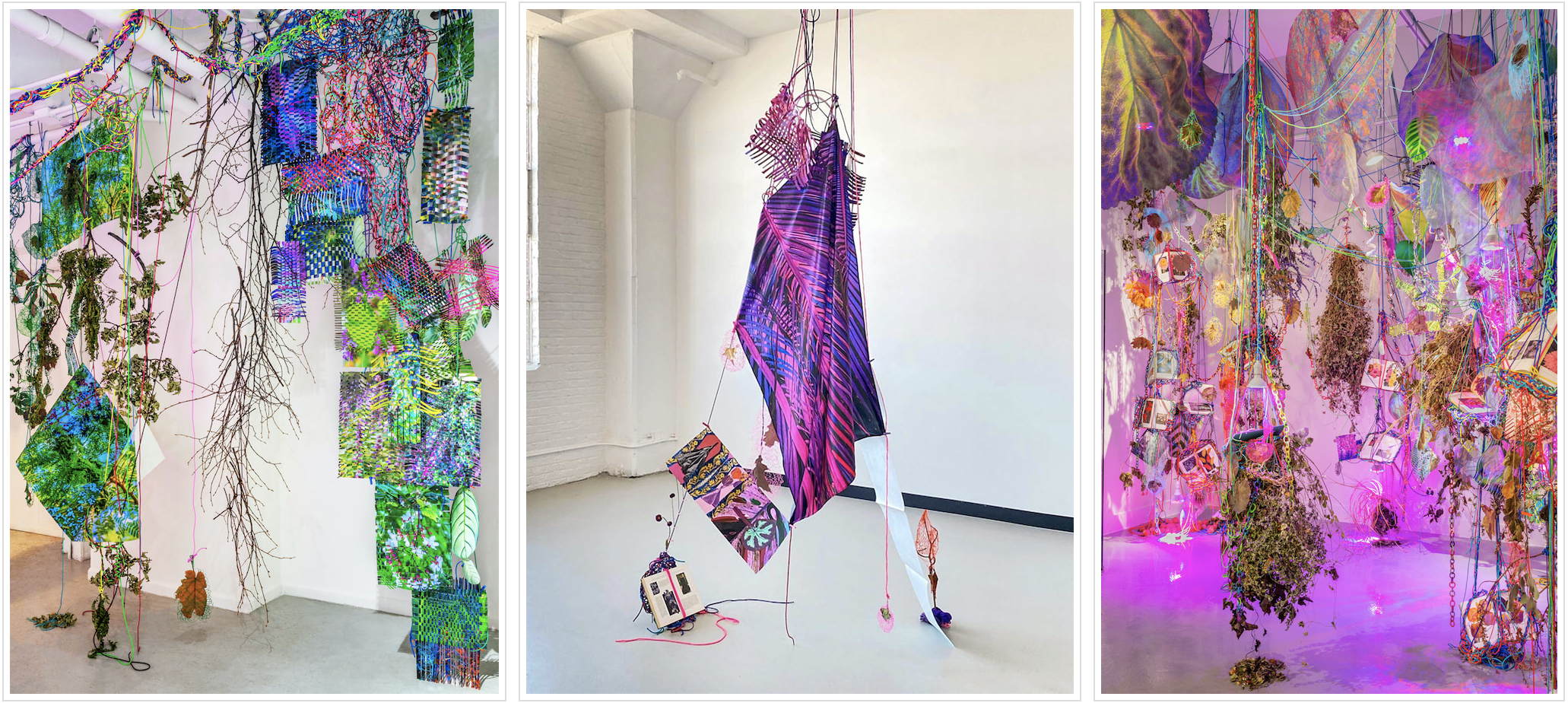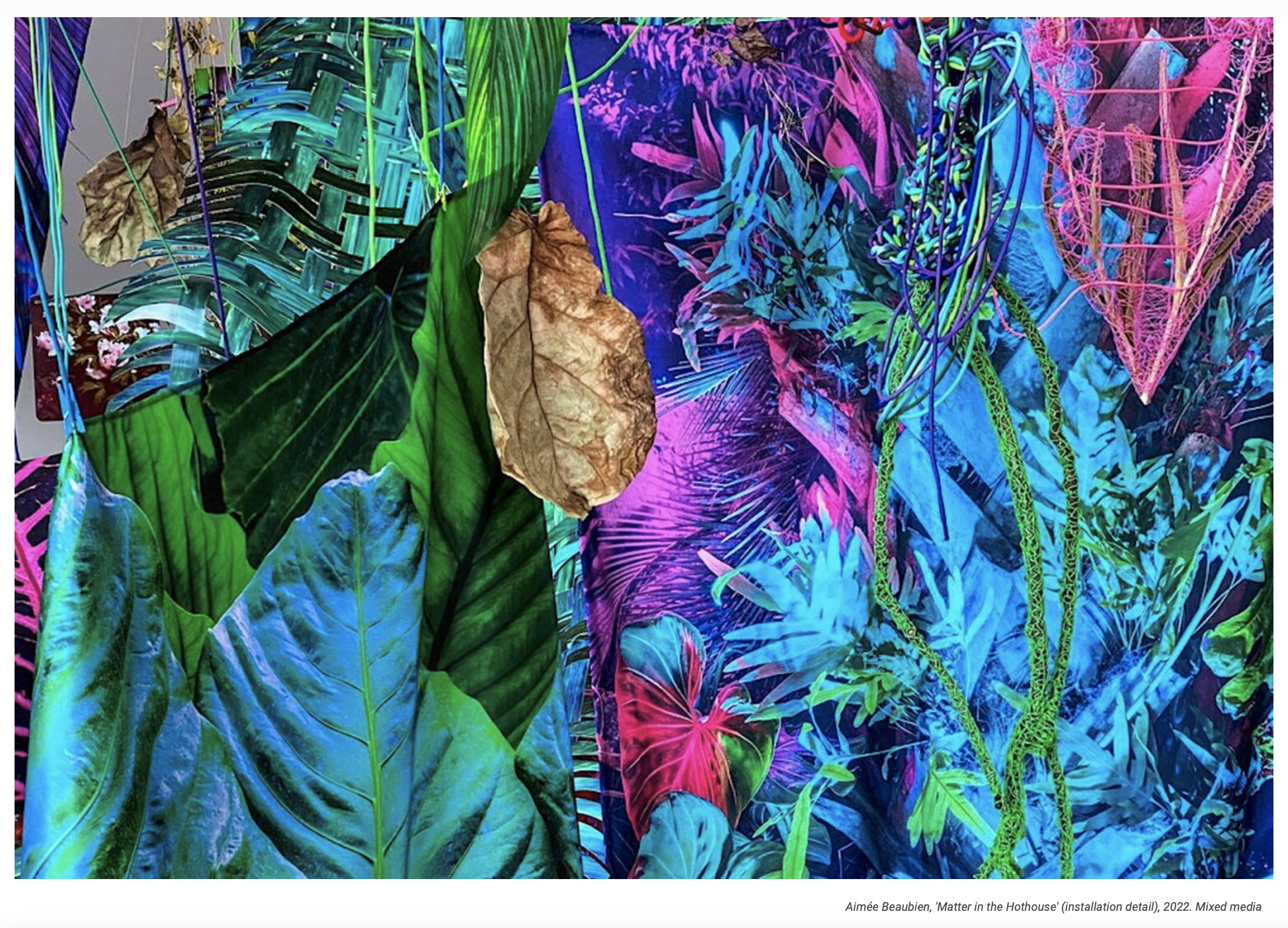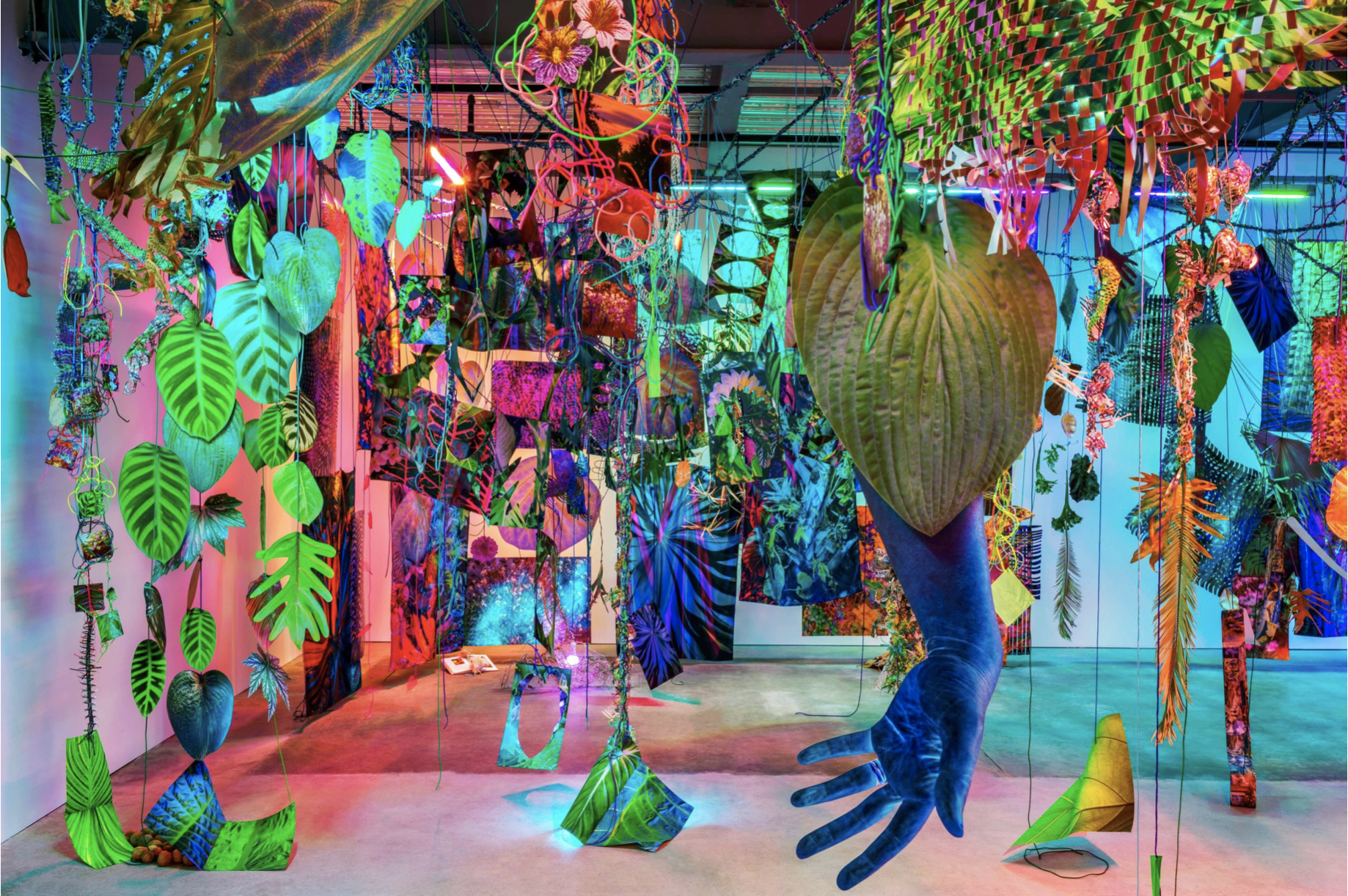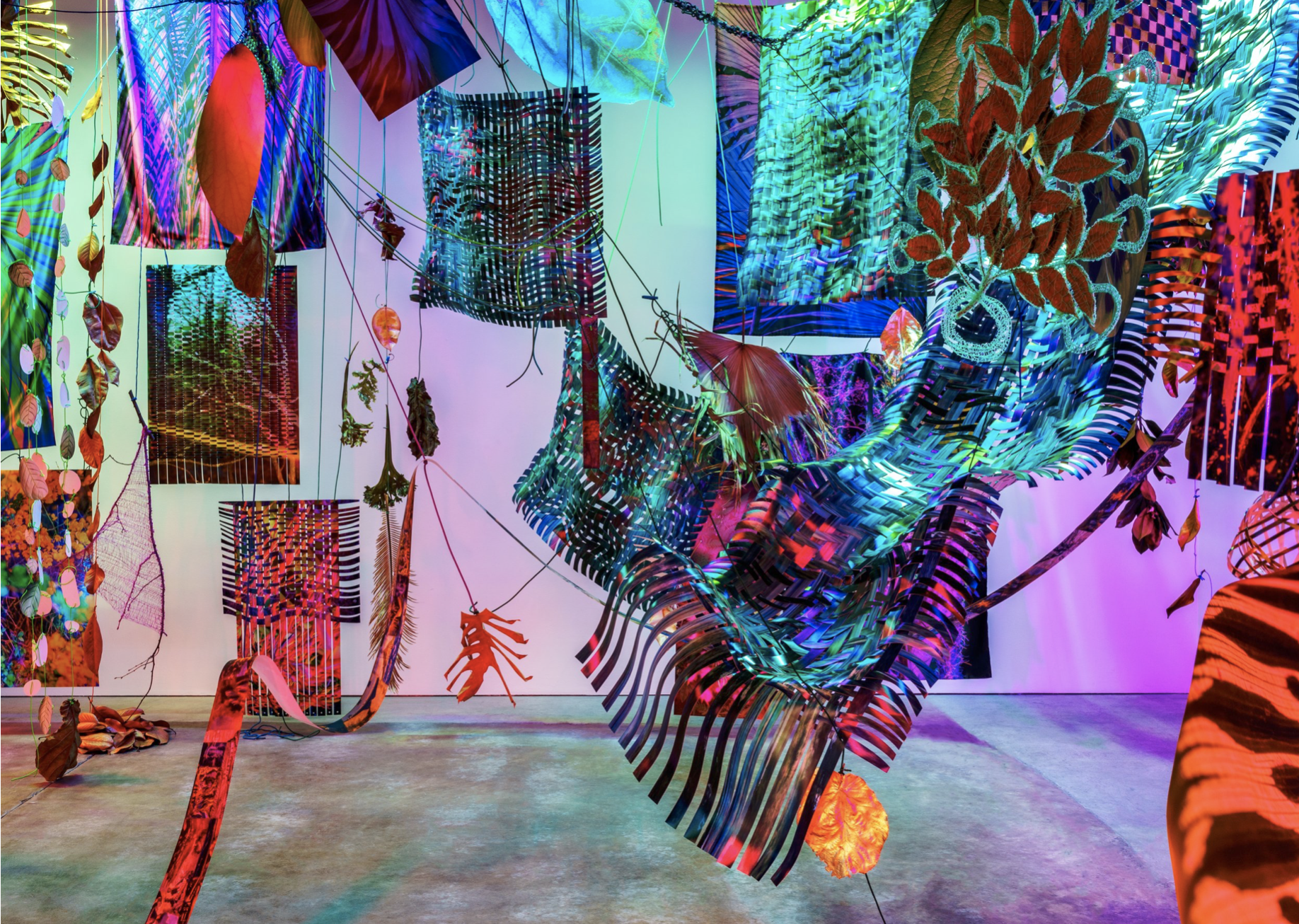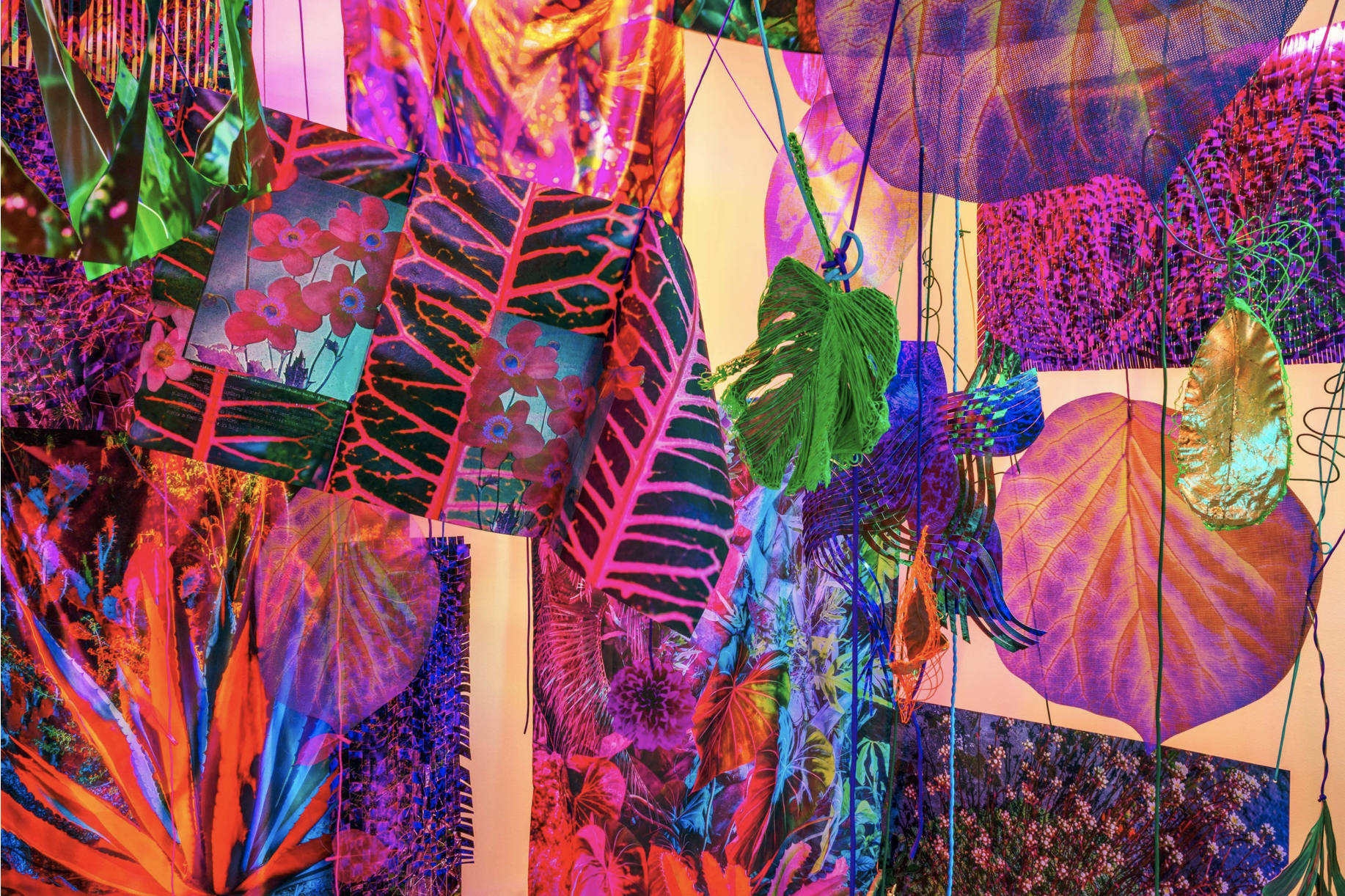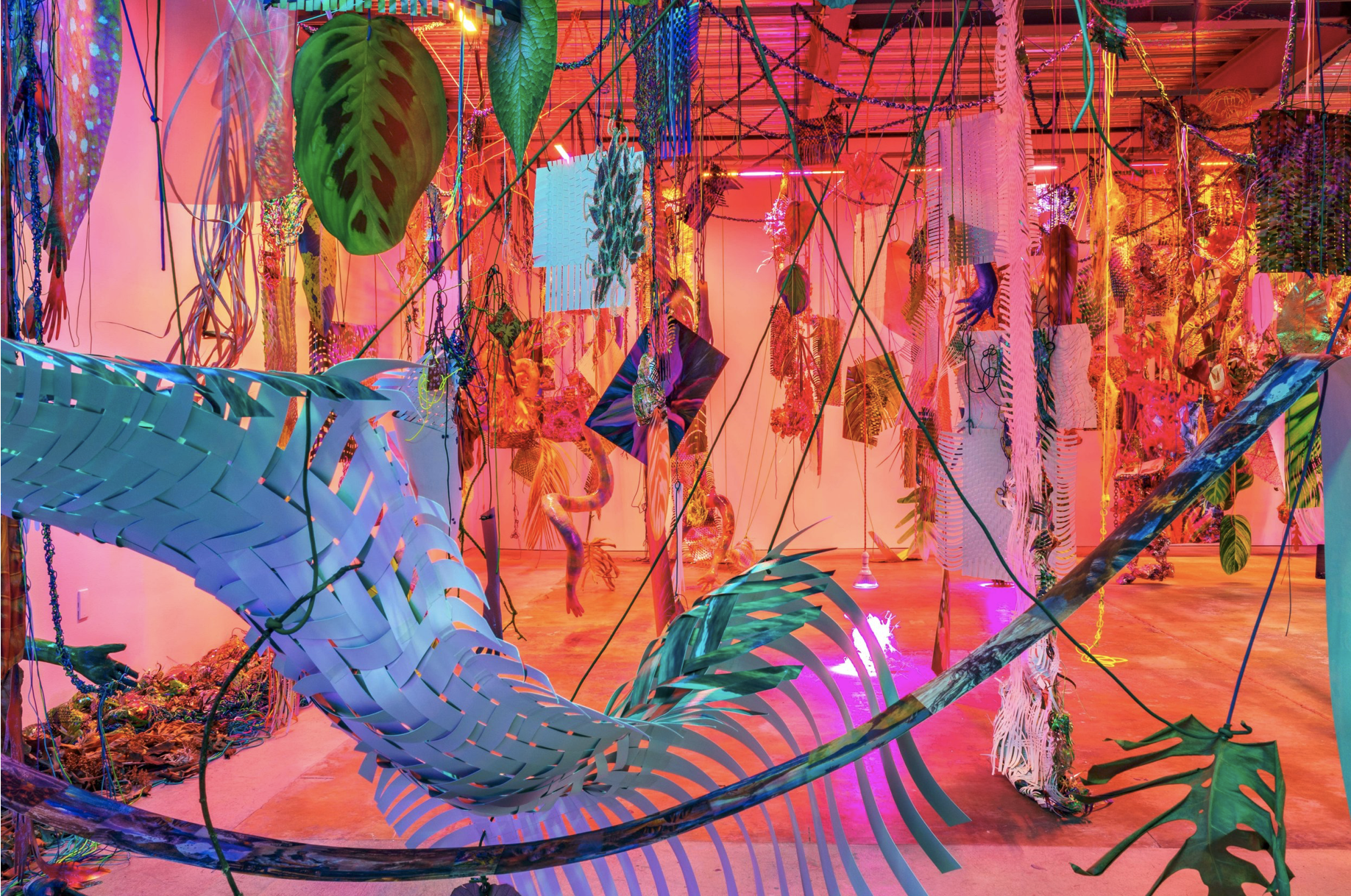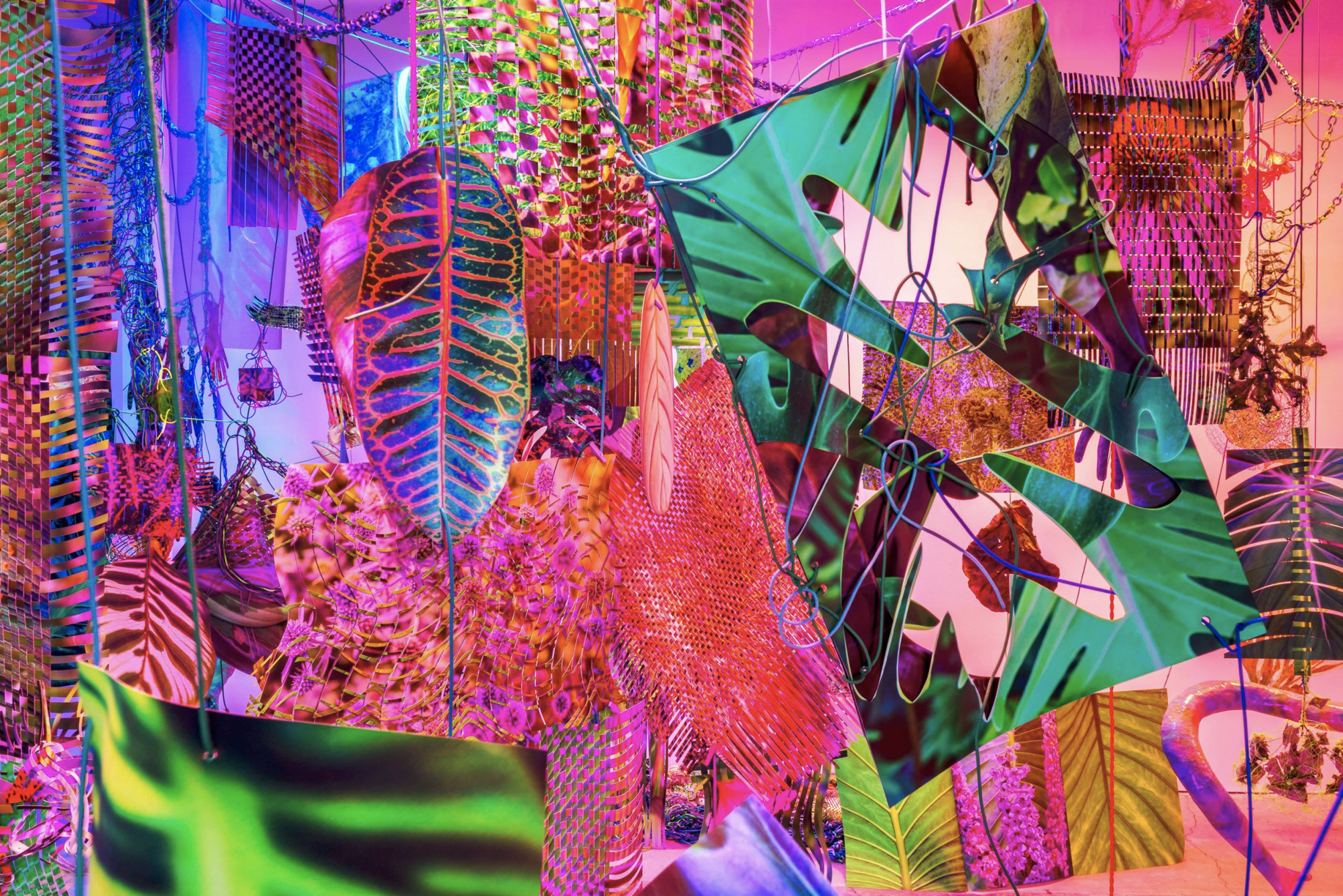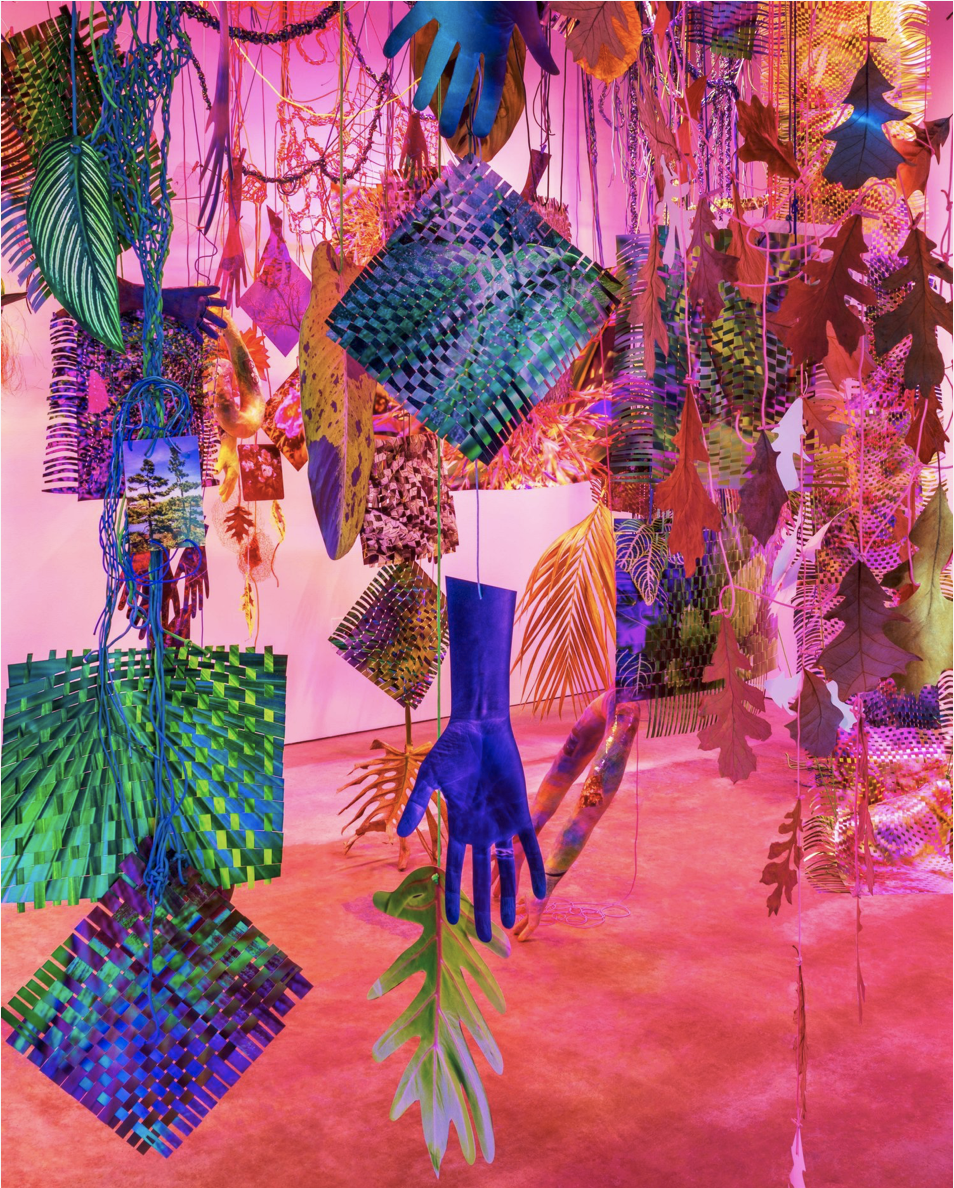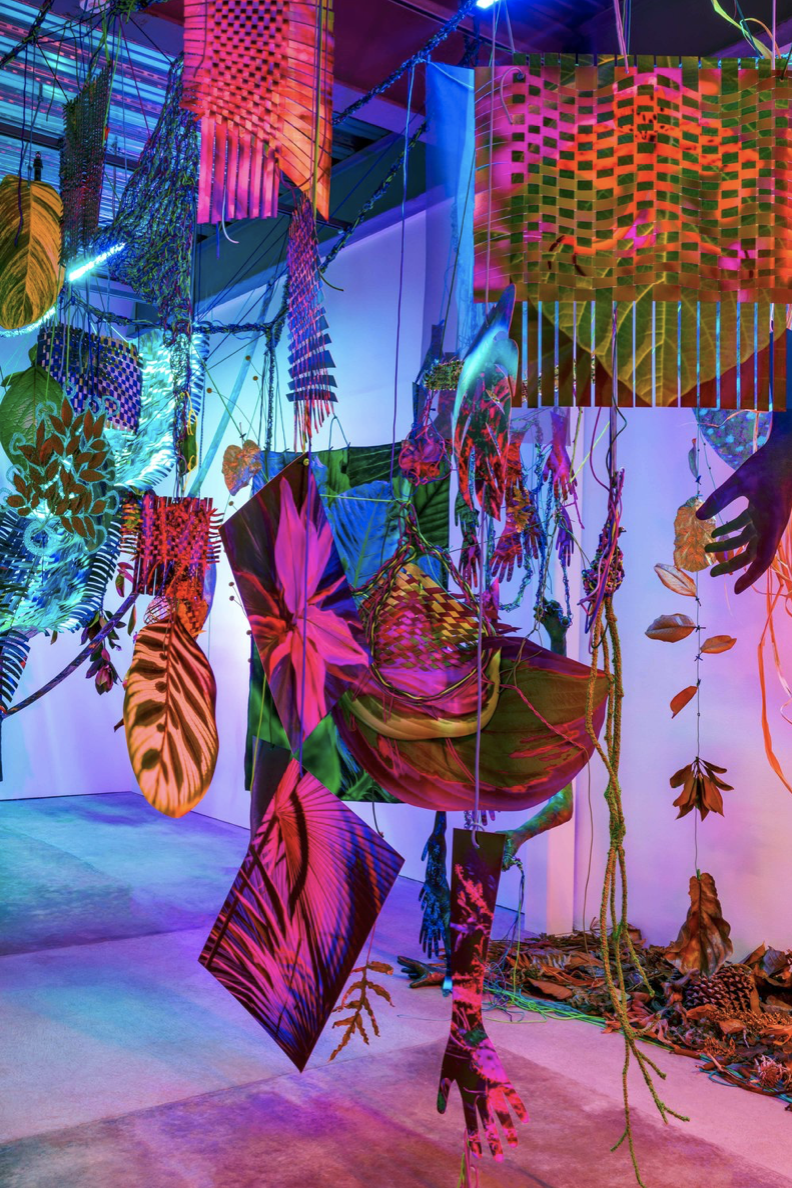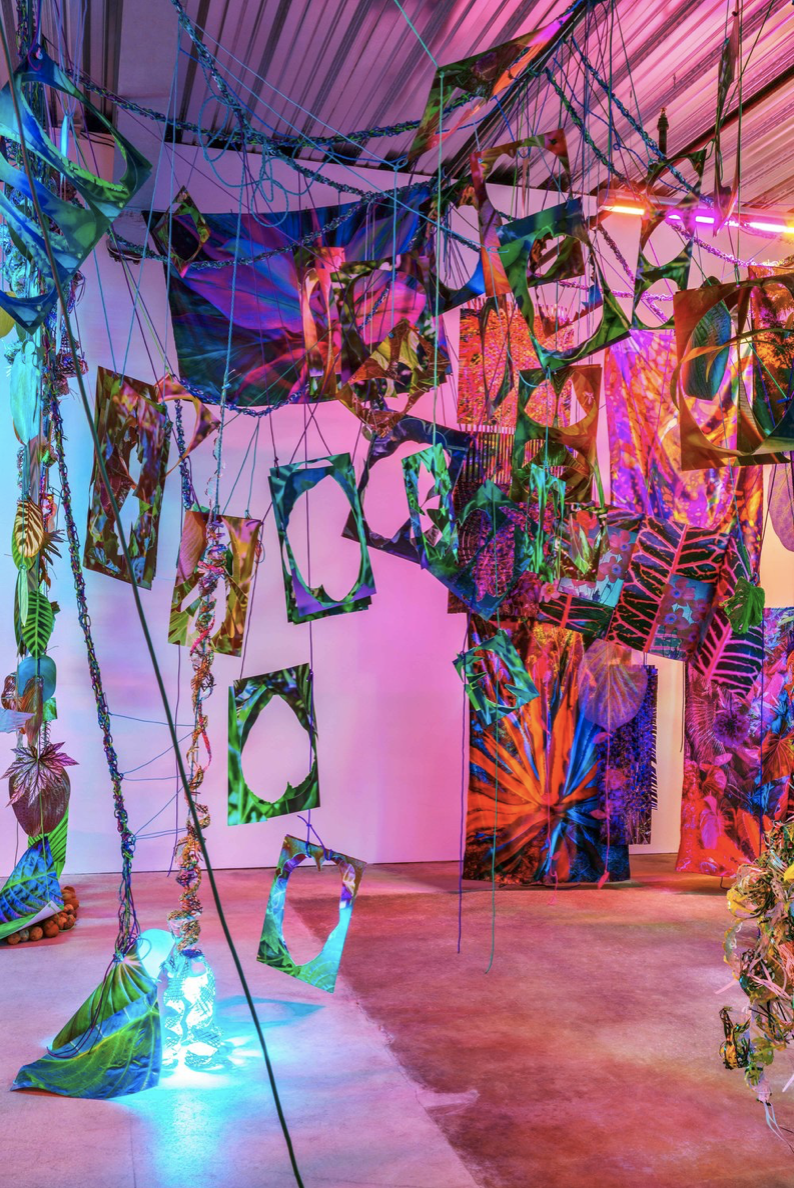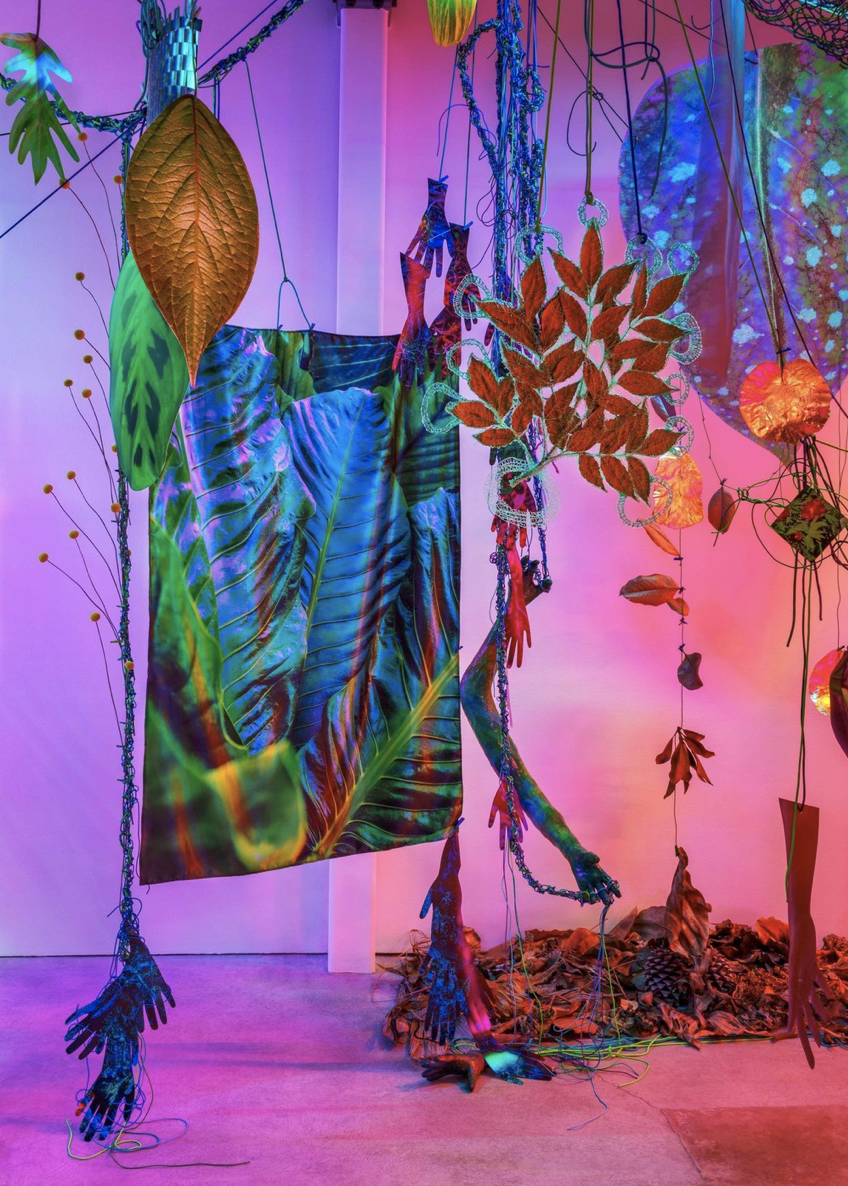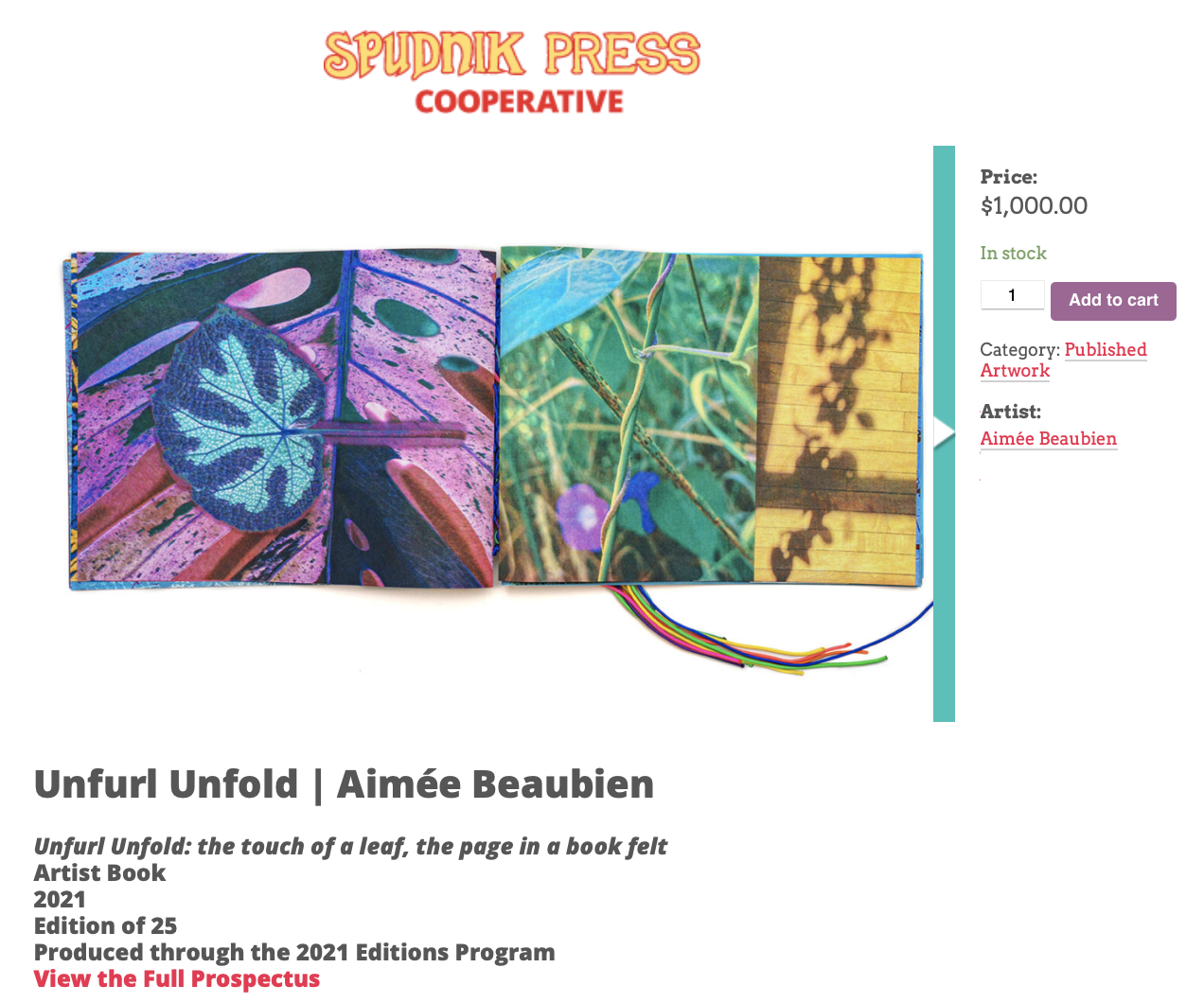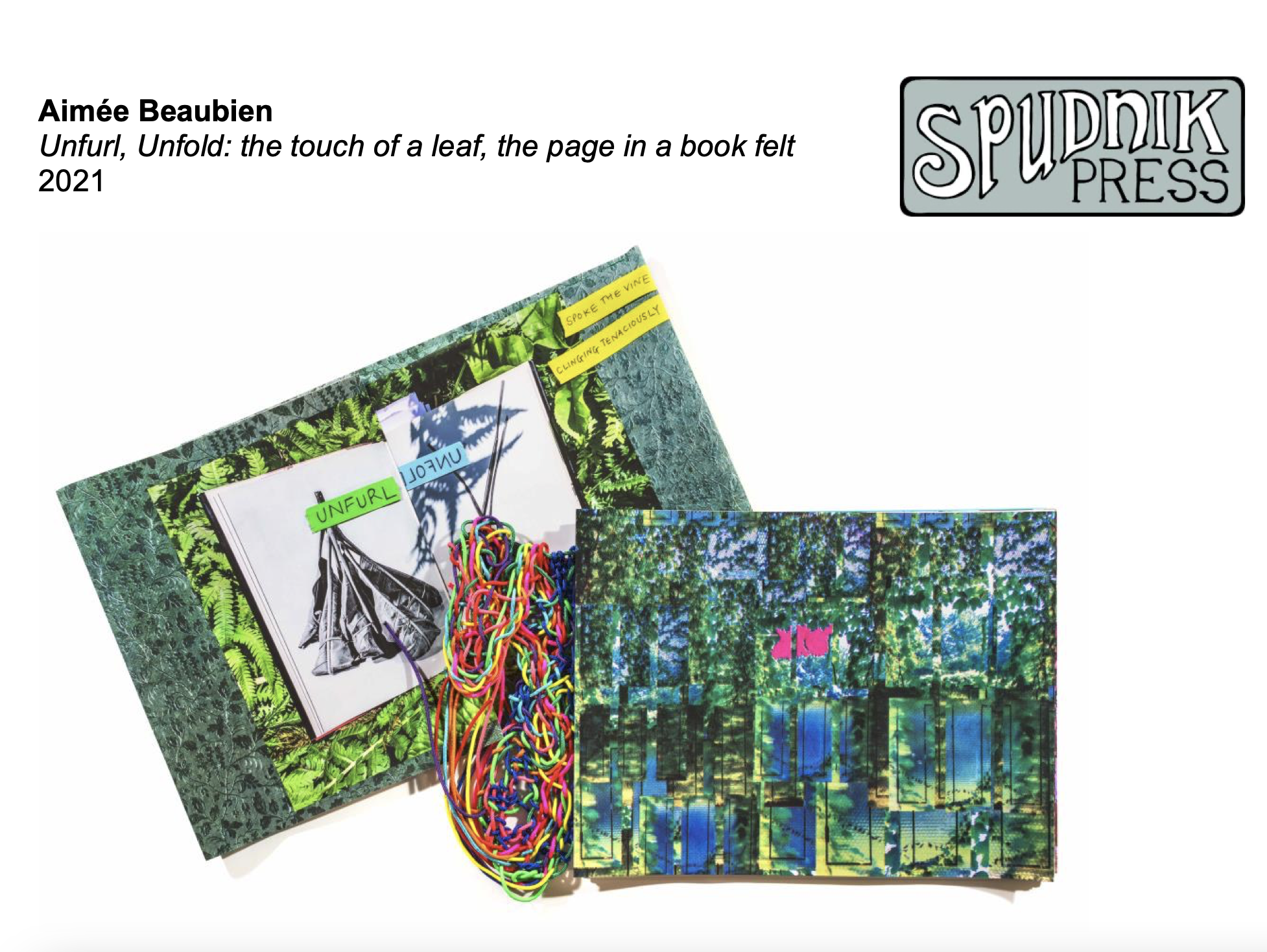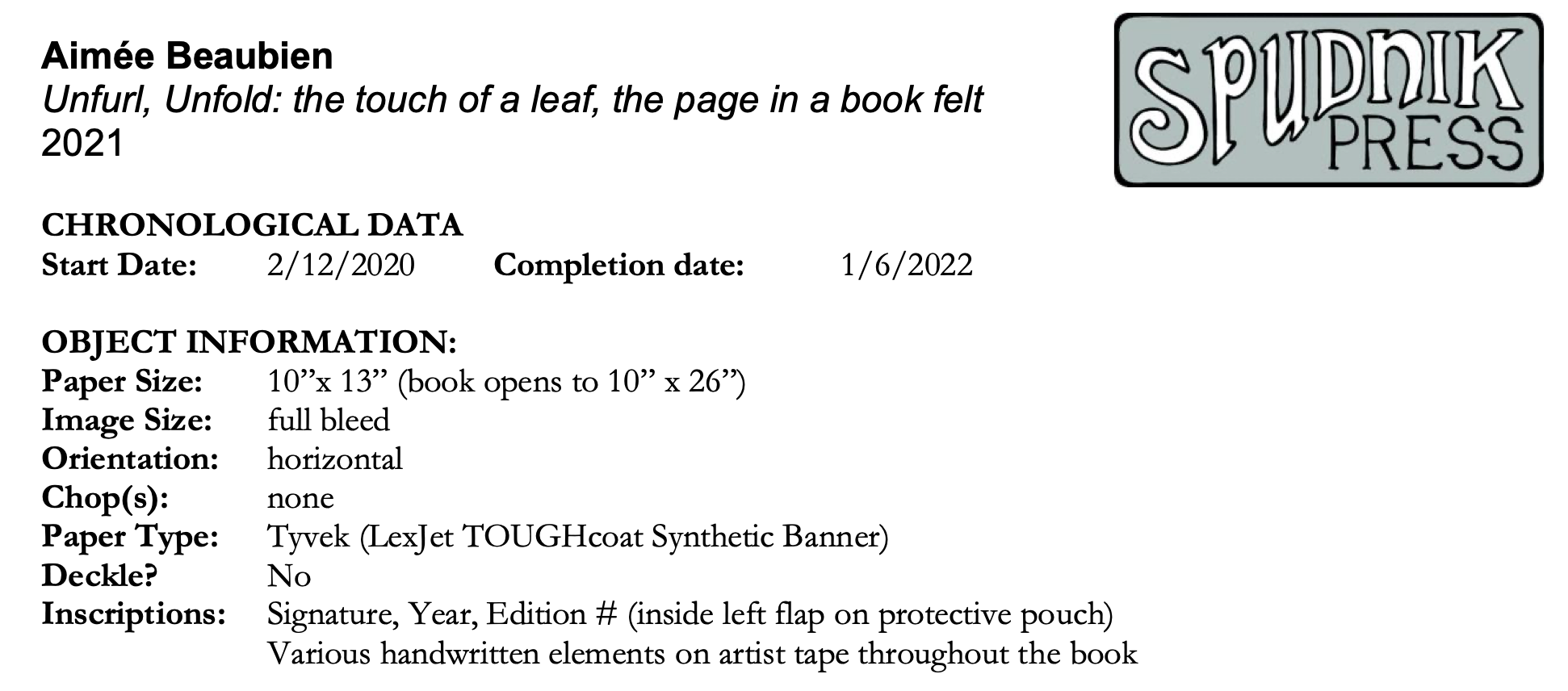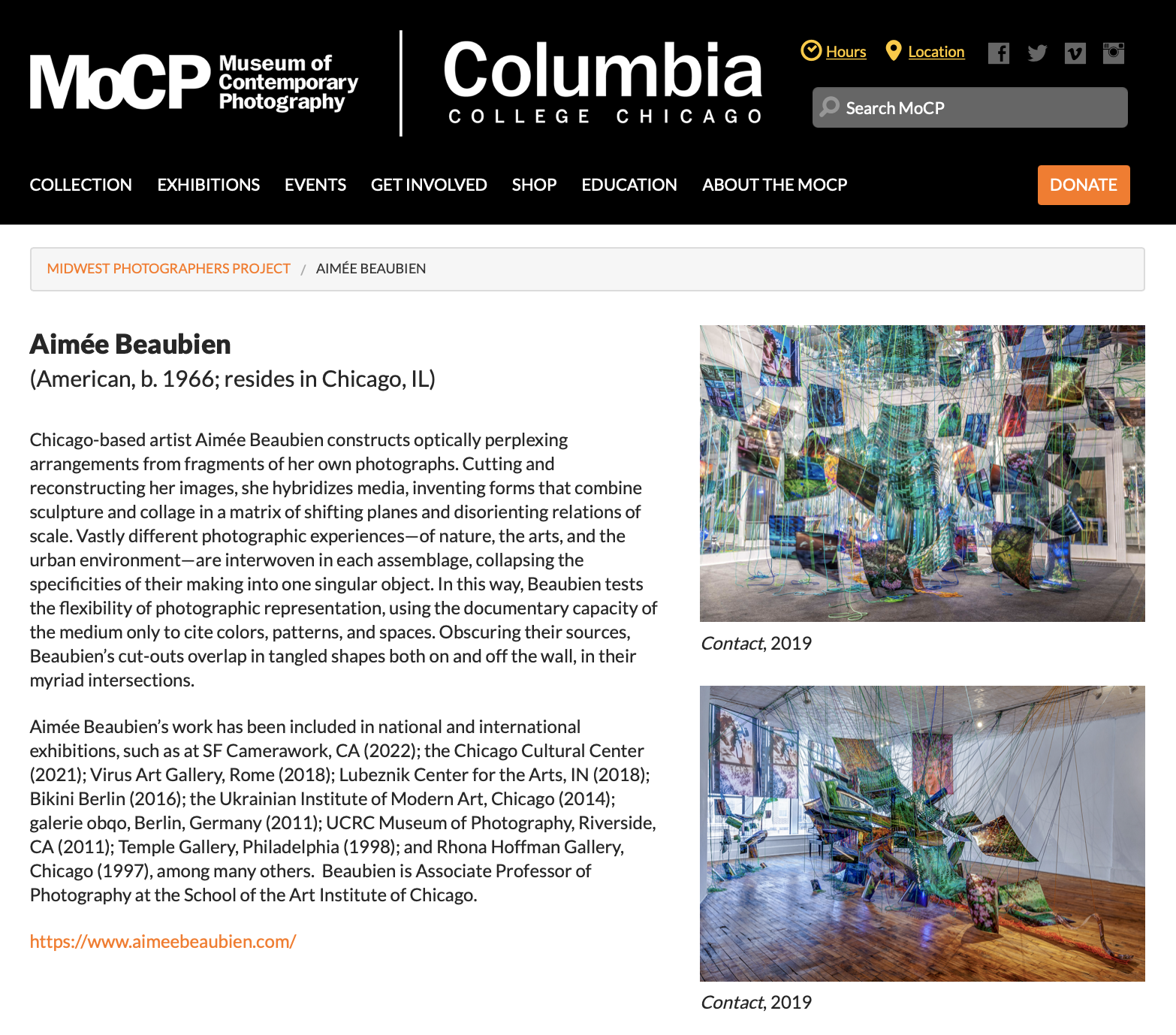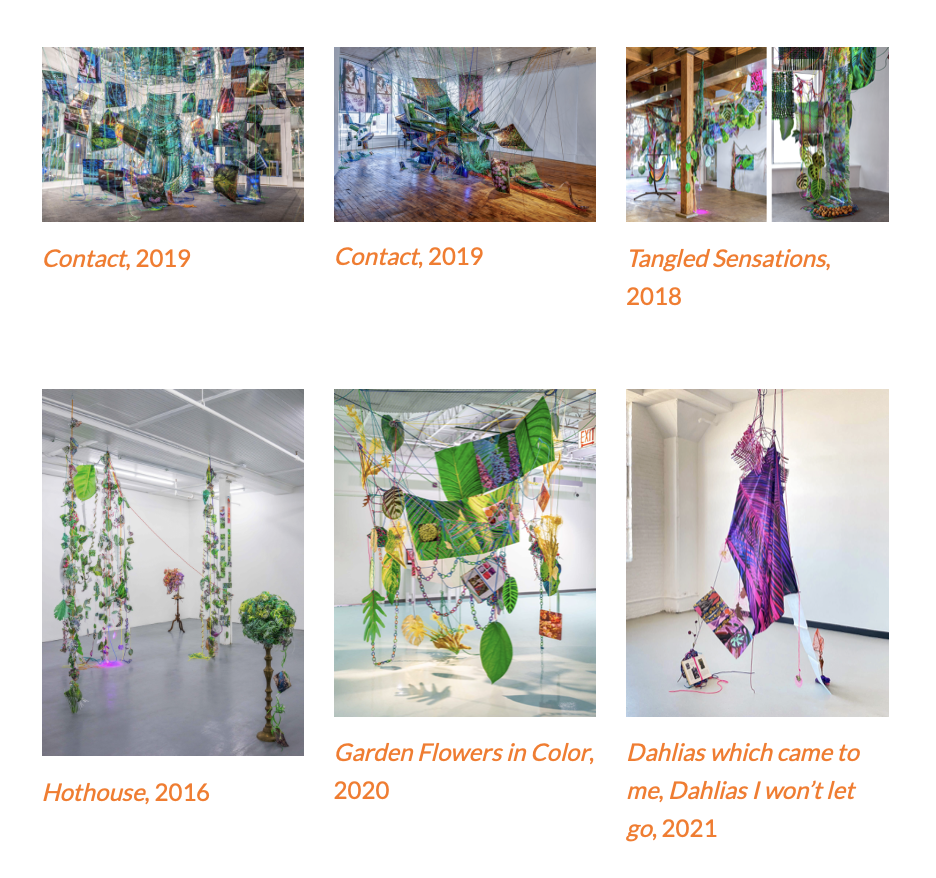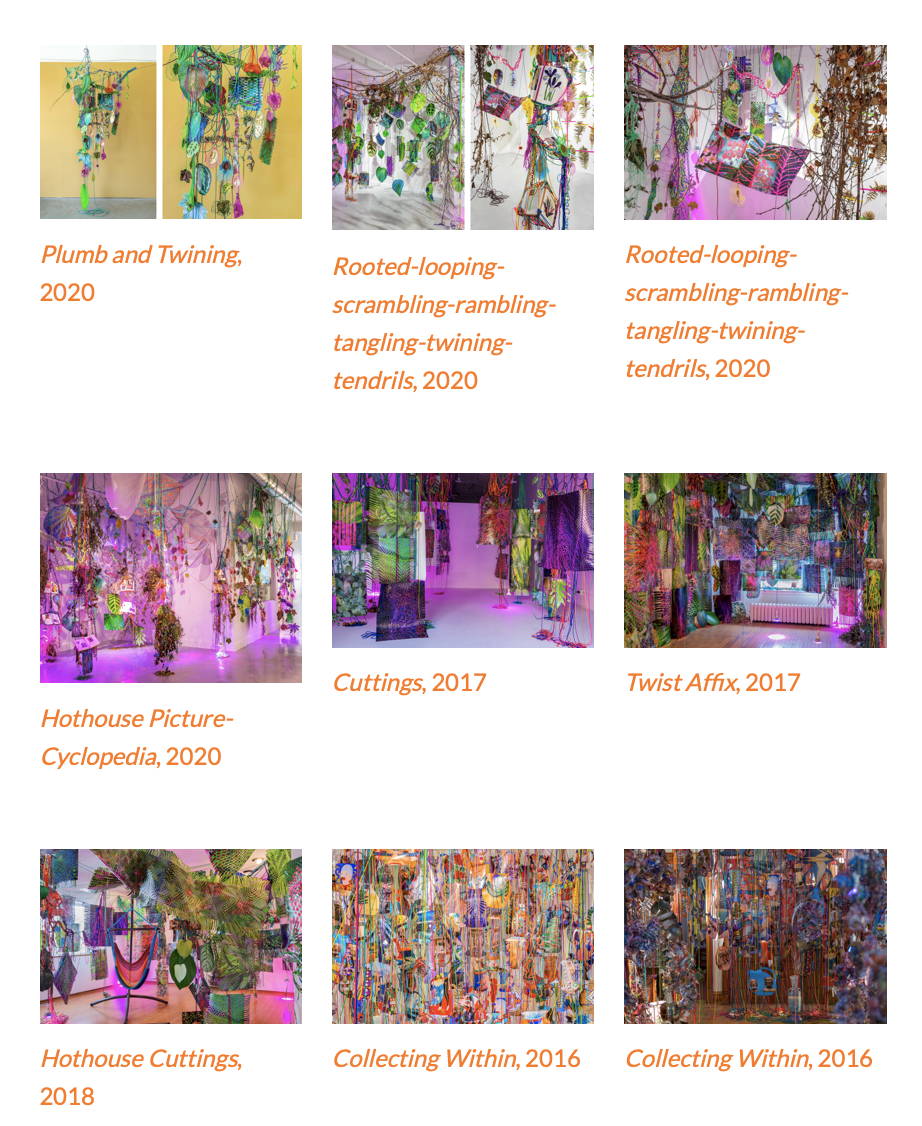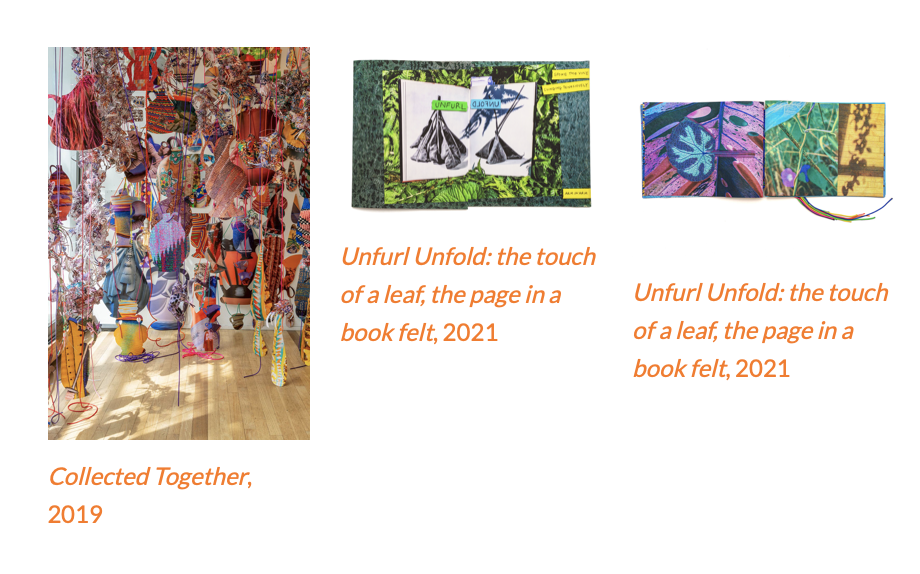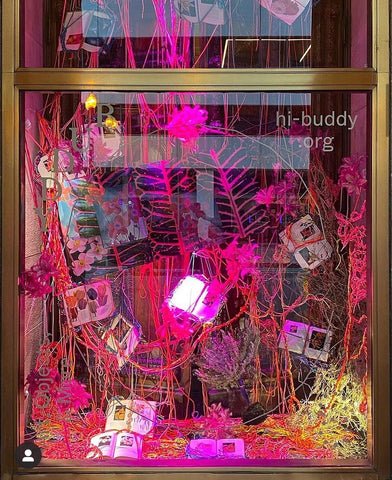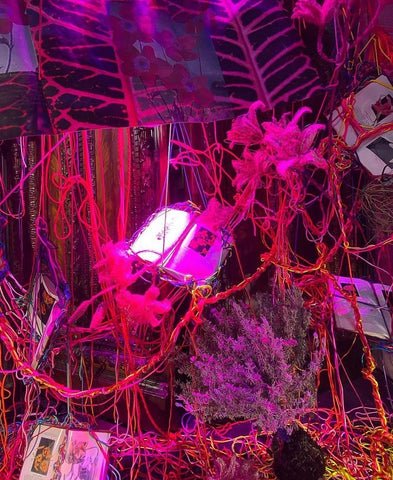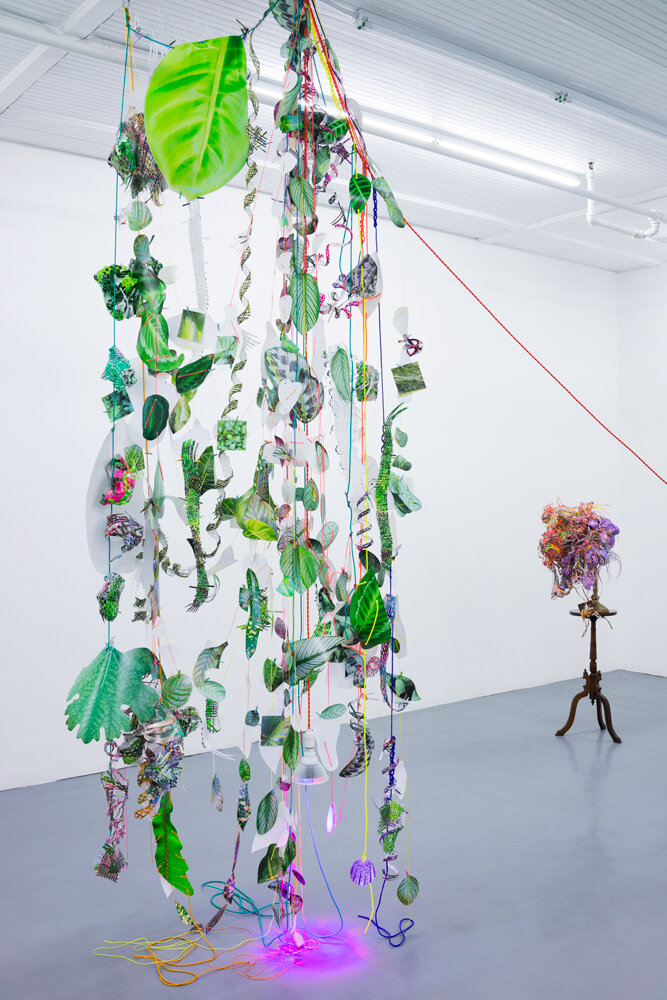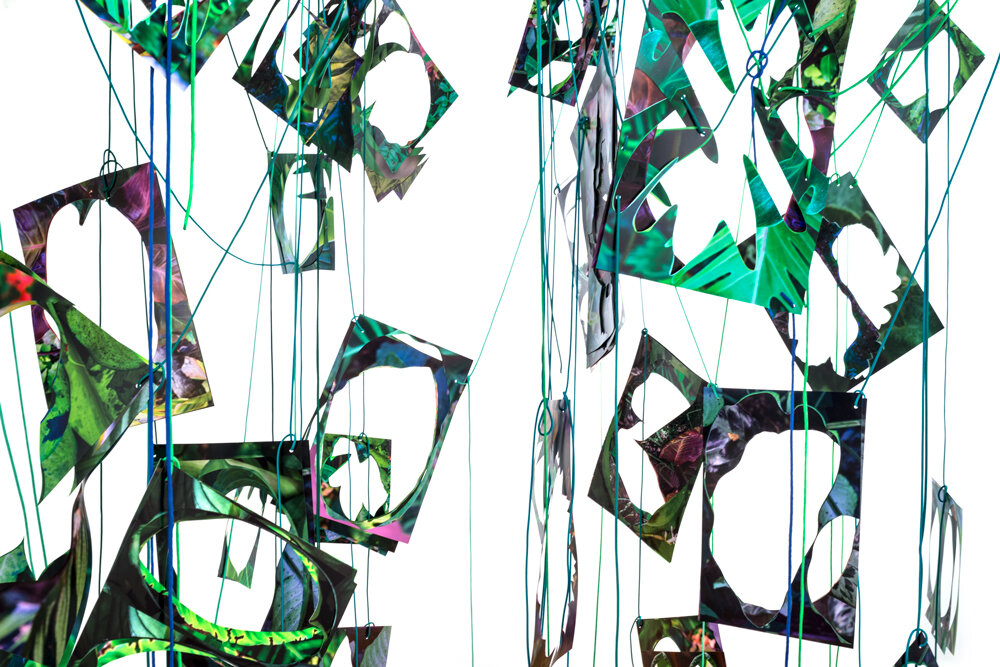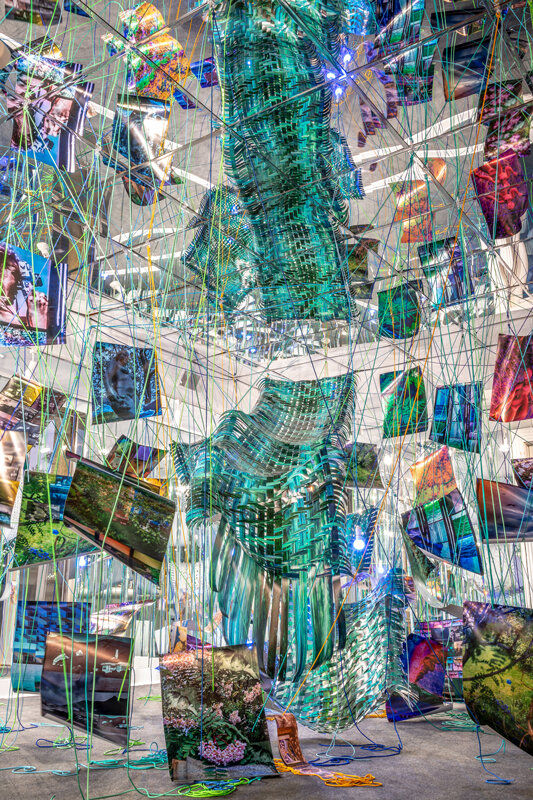PHOTOGRAPHY EDUCATOR: AIMÉE BEAUBIEN
By Elizabeth Stone February 21, 2025
©Aimée Beaubien Through-the-Hothouse, 2024 Installation View, Hyde Park Art Center, Chicago, IL
Photography Educator is a monthly series on Lenscratch. Once a month, we celebrate a dedicated photography teacher by sharing their insights, strategies and excellence in inspiring students of all ages. These educators play a transformative role in student development, acting as mentors and guides who create environments where students feel valued and supported, fostering confidence and resilience. By encouraging exploration and critical thinking, these teachers empower students to pursue their passions and overcome challenges.
I am thrilled to present artist and educator Aimée Beaubien this month. I have long held Aimée in high regard, though I’ve only had the chance to see her amazing immersive installations online. Discovering Aimée’s profound effect and accomplishments as an educator, broadening her students’ perspectives and motivating them to engage with the world through curiosity and vulnerability, has been truly inspiring. Within this article you’ll find some of Aimée’s early photographic work as a student, a selection of her installation pieces from the last decade, testimonials from her students and her reflections on her aspirations as an educator.
©Aimée Beaubien Exposed, 1988 Silver gelatin print, book, shelf, (during BFA)
©Aimée Beaubien, Lure is my stake, 1992, Silver gelatin prints, paint (during MFA)
©Aimée Beaubien, Slit and Crack, 1999 Silver gelatin prints (after school)
In the word’s of Aimée’s students,
My first encounter with Aimée was unforgettable. On the very first day of class, she invited all of us to dance with her, instantly creating an environment free of insecurities. She has this amazing ability to break down power structures and judgment that is usually present within higher institutions, celebrating each of us for where we truly are. Aimée knows how to strike a balance: she challenges and inspires us to push our limits while ensuring we feel supported as we explore and embrace the unknown.
With her whole heart, she dedicates herself to her students, sharing her own experiences to give thoughtful advice and helpful resources. Aimée has such a kind soul; she creates a space where negative judgment doesn’t exist, and love and understanding shine through. She’s not just a mentor—she’s a true source of support, encouraging both the artistic journeys and personal growth with each student she meets.
Kamille Kirschling, kirschlingkamille.com
A great teacher leads by example, and Aimée Beaubien’s teaching philosophy has shaped me not only as an artist but also as an educator. Artistic practice is a delicate and sensitive realm, where every word seeps into the intellectual process and resurfaces after a long, untamed cycle of reflection. She challenges without overpowering, guides without imposing, and brings an unmatched depth of knowledge while always keeping her students at the center. Her unwavering commitment, ever-evolving engagement with contemporary discourse, and willingness to open her studio and mind to us have created an environment where learning doesn’t end when class is over—it lingers, grows, and continues to shape us long afterward.
Galit J. Aloni, julia-aloni.com
Aimée opened my eyes to the real possibility of creating immersive experiences with the photographic medium. Prior to my studies with her, I had only seen photography in a two-dimensional way. Now, I understand just how much a photographic work transforms when placed in a three-dimensional space. Installation has become an important part of my practice, thanks to Aimée, and I’m very grateful for the time I spent in her classes.
Garrett Bakke
©Aimée Beaubien Hothouse, 2016 Installation view, The Pitch Project, Milwaukee, WI
Describing my work in words often feels inadequate. Lately, I have taken to building a maximalist world, a radical experiment in immersive design. Every exhibition poses new challenges: I learn through making, driven by trial and error. My process begins with logistical questions: How much can I create on my own within the physical constraints of the space and schedule? What unexpected lessons will emerge this time? The answers always surprise me, as each installation becomes a world of discovery.
Plants and photographs are woven into the fabric of my work. In a world facing ecological depletion, I use the infinite reproducibility of photography to imagine a boundless propagation of plant life. This imagined abundance fills my installations, blending real and simulated forms into vivid, ever-shifting landscapes.
I draw from the aesthetics of cut-up collage to recontextualize contemporary life and the fractured state of nature. My materials—paracord, photographs, plants, bioplastic—reflect the interplay between the natural world, displaced nature, and its simulation. Within the tangle of elements, a single leaf might dangle from paracord tendrils in an elaborate overhead network, while a photograph of a leaf floats nearby. Leaves emerge in multiple forms—large, small, gold-leafed, encased in bioplastic, woven, or printed on fabric. The result is a multifaceted composition that bridges the natural and constructed worlds.
Paracord, originally designed for parachutes and now associated with survival gear and friendship bracelets, has become a key material in my work. I finger-knit it into webs and vines that suspend objects like photos, books, and plant matter, merging human-made materials with organic forms. This blending of natural and industrial elements invites viewers to contemplate the tension between nature’s fragility and humanity’s drive to preserve it.
Since 2015, I’ve created site-specific installations inspired by the concept of the hothouse—an artificial environment where nature grows in accelerated, hybrid forms. These ephemeral assemblages mimic the interconnected structures of ecosystems. Like reading a photograph, my compositions offer a web of connections, blurring the boundaries between the tangible and the imagined. Navigating my installations feels like walking through a three-dimensional collage, where every detail is interconnected, encouraging visitors to form their own pathways through the space.
Labor is at the heart of my practice. I spend hours meticulously crafting small elements that merge into expansive environments. Covering a single sunflower stalk in bioplastic might take 40 hours, while large-scale installations dense with collage, woven networks, and sculptural forms must be completed quickly due to tight installation schedules and physical constraints of the site. My process mimics the adaptive growth of vines as I knot, weave, and bind objects into intricate, interconnected networks.
©Aimée Beaubien Twist Affix, 2017 Installation view, Freeark Gallery, Riverside, IL
©Aimée Beaubien Cuttings, 2017 Installation view, Platform Gallery, Evanston, IL
©Aimée Beaubien Contact, 2019 Installation view, Laney Contemporary Fine Art, Savannah, GA
ES: How and why did you get into teaching?
AB:I grew up always on the move—constantly the new kid, navigating unfamiliar classrooms and figuring out new rules. During one stop along the way, I landed in a revolutionary community education program. It embraced unorthodox goals, prioritizing critical and creative thinking, and that experience shaped me profoundly. It inspired a lifelong curiosity about alternative pathways and environments where learning thrives as a shared, collaborative activity.
In graduate school, I had my first teaching experience as a TA in a large photography department. It exposed me to diverse approaches to teaching and the challenges of balancing art and life. Full-time teaching jobs were extremely rare, so I pursued other ways to support myself—working as a studio manager for an advertising photographer while continuing to develop my own creative work.
Then, out of the blue, I was invited to teach an introductory photography class at the School of the Art Institute of Chicago (SAIC). It was just one day a week for a single semester, but that experience hooked me. One semester turned into two, and soon I was juggling part-time teaching alongside full-time work in commercial photography. Things shifted more towards education when I was invited to serve as the first Graduate Coordinator for SAIC’s Photography Department. Teaching became central to my life, and by my 17th year, I transitioned to full-time, beginning the tenure process. Now, 27 years later, teaching still surprises me.
ES: What keeps you engaged as an educator and mentor?
AB: Art education has always had a magnetic pull on me. I’m endlessly curious about what compels people to make things. That curiosity keeps me energized in the classroom, where I encourage students to explore diverse artists, mediums, and creative processes in a non-hierarchical way.
I see teaching as an invitation to share my inquisitiveness and embrace of uncertainty. Learning is dynamic, messy, and full of possibility. When I introduce students to new ideas or methods, it’s not about dictating answers but creating a space for exploration. We question, experiment, and learn together. That collective energy keeps me coming back.
ES: Has your personal work been affected by your teaching experience?
AB: Absolutely. Teaching constantly reminds me to be open to discovery, especially in face of challenges. Working with students as they are developing their creative process pushes me to reflect on my own creative process. One example is how my practice evolved to engage with photography’s infinite reproducibility as a way to imagine the boundless proliferation of plant life. This shift emerged while supporting students who were grappling with their overwhelm in the stream of digital images. Challenges such as these are compelling, and through our shared explorations, I discovered new areas to explore in my work.
ES: Was there a time you messed up and felt like you’d failed? How did you bounce back?
ES: I feel like I’m always messing up. But I’ve learned to see mistakes as essential to growth. One formative moment came when someone I deeply admired admitted they felt like a terrible teacher. That confession was a revelation. It gave me permission to rethink what success and failure mean in the classroom and beyond.
I’m not formally trained to teach, so I rely on my experiences as a learner. When things don’t go as planned, I remind myself to stay curious, ask questions, and embrace experimentation. I see an invitation to adapt and try again.
ES: Did you have an influential photography mentor or teacher? What was their biggest impact on you?
AB: I’ve been fortunate to encounter many impactful mentors and teachers. Because I moved with my family so frequently, I thought I was invisible and lasting friendships seemed beyond my grasp. Art school was transformative because, for the first time, I felt seen in the work that I was making. And I learned to appreciate every opportunity to learn what people see in my work and the work of others. Graduate TAs and classmates were especially inspiring—working together in the communal school darkroom fueled my imagination.
ES: What do you fear the most?
AB: I worry about the future of higher education and the growing absence of grace and tolerance in cultural discourse. In art, I fear the fixation on glamour overshadowing the resilience and effort it takes to sustain creativity. It’s in the unseen, unglamorous moments—facing rejection, starting over—that I find strength and resolve.
ES: What do you feel is your most important role as a teacher?
AB: My goal is to help emerging artists find their footing amid the swirling chaos of information, contradictions, and self-doubt. I encourage interdisciplinary thinking and experimentation, helping students imagine the full potential of their work and the many different ways it could move through the world.
Our classroom laboratory is a space where students are encouraged to embrace uncertainty and value their individual voice. I am committed to fostering curiosity, minimizing judgment, and celebrating the messy exuberance of making and learning together.
©Aimée Beaubien Matter in the Hothouse, 2023 Installation view, SF Camerawork, San Francisco, CA
©Aimée Beaubien More Matter in the Hothouse, 2023 Installation view, SAIC Galleries, Chicago, IL
©Aimée Beaubien Into-the-Hothouse, 2023 Installation view, Mason Exhibitions, Fairfax, VA
©Aimée Beaubien, Into-the-Hothouse, 2023 Installation view, Mason Exhibitions, Fairfax, VA
©Aimée Beaubien Studio View, 2023
©Aimée Beaubien Hold Tight, 2024 Installation view, NON STNDRD, East St. Louis, MO
©Aimée Beaubien, Unfurl Unfold: the touch of a leaf, the page in a book felt, 2021, artist’s book, Spudnik Press Cooperative, Chicago, IL
©Aimée Beaubien Work in Progress, 2025
About Aimée
Aimée Beaubien reorganizes photographic experience while exploring networks of meaning and association between the real and the ideal in immersive installations, collages and artists’ books. Her work has been shown in national and international exhibitions including SF Camerawork, San Francisco, CA; Art Institute of Chicago, IL; Museum of Contemporary Photography, Chicago, IL; Newport Art Museum, RI; Houston Center for Photography, TX; UCR Museum of Photography, Riverside, CA; Gallery UNO Projektraum, Berlin, Germany; Virus Art Gallery, Rome, Italy. Aimée Beaubien is an Associate Professor of Photography at the School of the Art Institute of Chicago, IL where she has taught since 1997.
Website: aimeebeaubien.com
Instagram: @aimeebeaubien
Elizabeth Stone is a Montana-based visual artist exploring potent themes of memory and time deeply rooted within the ambiguity of photography. Stone’s work has been exhibited and is held in collections including the Museum of Fine Arts, Houston, TX, Center for Creative Photography, Tucson, AZ, Cassilhaus, Chapel Hill, NC, Yellowstone Art Museum, Billings, MT, Candela Collection, Richmond, VA, Archive 192, NYC, NY and the Nevada Museum of Art Special Collections Library, Reno, NV. Fellowships include Cassilhaus, Ucross Foundation, Willapa Bay AIR, Jentel Arts, the National Park Service and the Virginia Center for the Creative Arts through the Montana Fellowship award from the LEAW Foundation. Process drives Stone’s work as she continues to push and pull at the edge of what defines and how we see the photograph.
Website
Instagram
Bluesky
Tags: Aimée Beaubien, Photography Educator


